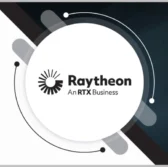The Department of Defense’s CJADC2 initiative is making meaningful strides forward in 2024 as military services, international allies and industry partners prioritize collaboration. James Parys, vice president of growth and strategy at Ultra Intelligence & Communications, sat down with Executive Mosaic to talk about the importance of CJADC2, the role artificial intelligence and machine learning can play in these efforts and how these technologies and initiatives will transform operations at the tactical edge.
Parys, a former U.S. Navy operations specialist, joined Ultra I&C in November 2023. Prior to Ultra I&C, Parys served as SVP of mission solutions growth at Parsons, and his career includes time spent at Cubic and Northrop Grumman. Read below for his full Executive Spotlight interview.
Where are we with CJADC2, the DOD’s effort to achieve enterprise-wide connectivity?
The Department of Defense has a major goal to connect all military services and our coalition partners into one unified network. That’s what the CJADC2 initiative is all about. It’s all about giving joint force commanders the tools they need to command forces across all warfighting domains and throughout the electromagnetic spectrum. This way, they can deter and, if necessary, defeat adversaries globally.
The term CJADC2 itself shows a renewed focus on combined efforts with international partners and different military commands. The ‘C’ in CJADC2 is important because it highlights the need for interoperability from the get-go. This means these capabilities can be effectively used by various U.S. combatant commands and foreign allies. The National Defense Strategy even emphasizes the development of interoperable command, control, communications and computers (C4) capabilities with allies and partners to facilitate global force integration and combined joint operations.
To the point, CJADC2 is all about interoperability and collaboration. The aim is to connect ‘sensors to shooters’ throughout the future battlespace. This involves close collaboration with partners, including the Five Eyes intelligence-sharing alliance and NATO. The focus is on sharing applications, data and reference architectures to ensure complementary capabilities among allies.
Most recently, the Pentagon has achieved a minimum viable version of CJADC2 and is allocating $1.4 billion for this connectivity campaign in its fiscal 2024 budget. The effort involves integrating new and existing hardware and software through an agile DevSecOps framework, creating seamless connections across existing DOD systems.
So, in a nutshell, CJADC2 is a critical step toward achieving enterprise-wide connectivity. It’s all about enabling effective command and control across diverse military services and international partners in the complex and interconnected battlespace of the future.
Tell me about the importance of developing systems that are interoperable across domains.
Well, there are a few key reasons for this.
First, there is what’s called unified action. This is all about being able to deploy and use military capability across a unified action partnered force. It’s like having a team where everyone has their own unique skills and abilities, but they all work together to achieve a common goal. This allows us to leverage economies of scale and share resources with allies and partners.
Then there is force integration. This is where the interoperability of C4I systems comes into play. It’s like fusing the services and coalition partners into a single, unified military force that’s super effective because it exploits and coordinates the individual force capabilities.
Then there’s communication and collaboration. Interoperability lets forces, units and systems work together. This means they can communicate and share common doctrine and procedures, as well as use each other’s infrastructure and bases.
Another big point is overcoming challenges. As we see more and more variety in ground, surface and air platforms with Tactical Data Link (TDL) capabilities, and as we rely more on joint, allied and coalition forces, there’s a growing demand for TDL interoperability and training.
Lastly, there’s future readiness. The future’s going to be complex and challenging, and the services will need to provide a broader range of capabilities to achieve strategic outcomes across a diverse range of global missions.
So, to sum it all up, interoperability is a fundamental requirement for effective joint and coalition operations. It enhances communication, collaboration and decision-making capabilities, which in turn increases the overall effectiveness and efficiency of the military force.
What role do you think AI/ML can play in CJADC2?
There are several ways AI and ML can play a role in CJADC2 and make a big difference. First, consider the massive amounts of data coming from all over the place. AI and ML are like super-efficient data crunchers, making sense of all this information quickly and accurately. This is extremely crucial in a battlefield scenario where every second counts and decisions need to be spot on.
Then, there’s predictive analytics. It’s like having a crystal ball that AI and ML use to foresee potential threats or challenges. This allows us to be one step ahead and act before things happen.
AI and ML are also great at taking care of the mundane stuff. They can automate routine tasks, which means human operators can focus their attention on the more complex and strategic stuff.
Another big plus of AI and ML is that they can improve the interoperability of systems across different domains. This means they can ensure smooth communication and coordination among joint and coalition forces.
AI and ML also adds resilience and robustness to the CJADC2 network. They ensure the network can take a hit and keep on ticking.
Lastly, it’s all about trust and feedback. Warfighters need to trust AI/ML systems. They should be able to give feedback to these systems, which can then learn and adapt, getting better over time.
In sum, AI and ML can really boost the capabilities of CJADC2. They make it more effective, efficient and ready to adapt to the fast-paced changes of modern warfare.
How can AI/ML reduce operator workload?
In addition to what I mentioned previously, AI and ML algorithms have also been used to reduce the cognitive workloads of military Unmanned Aerial Vehicle (UAV) operators. For example, an AI algorithm was developed to filter out irrelevant information from command-and-control maps, which helped reduce operators’ cognitive workloads.
In the realm of electronic warfare, AI and ML can be used for signal recognition, emissions and signal control, emitter classification, threat recognition and jamming identification. This means operators don’t have to manually handle these tasks, which can be quite complex and time-consuming.
Finally, AI and ML can enhance situational awareness by processing and interpreting data from various sensors and sources. This gives operators a comprehensive picture of the battlefield, which means they can make informed decisions without having to piece together the puzzle themselves.
AI and ML can act as a force multiplier in CJADC2. They help reduce operator workload and enhance overall operational efficiency. It’s like having a super-smart assistant that can handle the heavy lifting, so operators can focus on what they do best.
Can you talk about Ultra’s work supporting CJADC2 goals?
Ultra Intelligence & Communications is playing a big part in the CJADC2 effort. Our goal is to make our military services more effective by integrating them across different domains and fostering collaboration and interoperability with our allies.
One of the key ways we are doing this is through data fusion. This involves integrating tactical data links to create a unified network. This network allows for global sensor integration and information sharing, leading to faster and more accurate decision-making.
But it’s not just about gathering and processing data. It’s also about making sure that data is secure. That’s where data encryption comes in. Encryption is a method of converting data into a code to prevent unauthorized access. So, while we are pulling in data from all over the place, we are also making sure it’s protected.
At Ultra I&C we are known for our innovative approaches for overcoming challenges in interoperability. We use products and technologies to successfully integrate systems and overcome these challenges.
Ultra I&C is supporting the CJADC2 goals by using our expertise in integrating complex systems, enhancing decision-making capabilities and overcoming interoperability challenges. We are doing this while ensuring data fused and encrypted, thus helping to create a unified, adaptable, multi-national defense network that can quickly respond to diverse global security challenges.
Let’s expand this conversation to the tactical edge. We’re seeing an increased need for reliable networks and communications capabilities at the edge. How do technologies like AI, software and cloud come into play at the edge?
AI, software and cloud technologies are really changing the game at the tactical edge.
AI and ML can make systems work better together across different areas. This means they can improve communication and coordination between joint and coalition forces. AI and ML can make the network stronger. They ensure the network can handle disruptions and continue to work effectively.
To use AI at the edge, we need to use cloud computing at the edge. A well-designed and built tactical cloud package can fit in any U.S. or NATO military vehicle and enable the use of database applications. This means we can use the power of AI and ML right at the tactical edge.
AI, software, and cloud technologies are really helping to improve how we operate at the tactical edge. They help us process data quickly, predict threats, automate tasks, improve communication, use cloud computing and make the network stronger.





